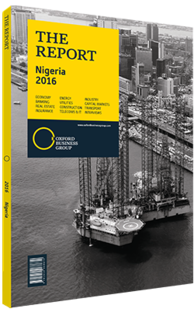Banking and financial services
The United Bank for Africa (UBA) is one of the largest financial services groups in sub-Saharan Africa. It is the third-largest bank in Nigeria with an estimated market share of 10%. The bank has a presence in 19 African countries, as well as in the UK, the US and France. Among Nigerian banks, it is the most diversified in terms of its reach across Africa. It serves over 8m customers through its more than 600 office locations. Three-quarters of UBA’s gross earnings are derived from its pan-African exposure. The bank’s risk appetite can be described as moderate. Its loan book is well diversified with a non-performing-loan (NPL) ratio of less than 2% as of the end of 2015, a cost of risk of 0.4% and a coverage ratio of 130%.
Financial Performance
UBA delivered a solid performance in 2015. Profits before tax (PBT) grew by 22% year-on-year (y-o-y) to N68bn ($214.7m) while profits after tax grew faster, by 45% to N65bn ($205.2m). The bank delivered 25% return on equity, placing UBA in third place in terms of profitability in the sector. The main driver behind the strong performance was funding income, which grew by 30% y-o-y thanks to margin improvement. This performance more than offset a 13% y-o-y decline in non-interest income. Another positive highlight was the bank’s ability to keep asset quality issues at bay. Loan loss provisions were well below expectations, leading to a low, single-digit NPL ratio for the fifth year in a row. The balance sheet reflected a subdued year with very modest movements. Total assets were flat y-o-y, while net loans, deposits and total liabilities all showed single-digit percentage declines. Moving to the first quarter of 2016, UBA’s PBT declined by 2% y-o-y to N18.1bn ($57.1m), but profits after tax fell by a wider margin of 8% y-o-y to N14.1bn ($44.5m). The extent of the decline in after-tax profits was driven by a negative result of N2.2bn ($6.9m) on the other comprehensive income line, compared to a loss of N1.5bn ($4.7m) in the first quarter of 2015. Further up the profit and loss statement, although profit before provisions fell by 4% y-o-y, a 57% y-o-y reduction in loan losses provisions provided a partial offset, limiting the reduction in PBT to 2% y-o-y. Moving back to profit before provisions, the key driver behind the 4% decline was non-interest income, which fell by 25% y-o-y to N16.8bn ($53m) on the back of a 71% y-o-y decline in net trading income to N2.4bn ($7.6m). This more than offset the 12% y-o-y growth in funding income to N34.4bn ($108.6m).
PBT and after-tax profits grew markedly by 63% quarter-on-quarter (q-o-q) and 48% q-o-q, respectively, largely driven by 140% q-o-q growth on the other income line (the fourth quarter 2015 non-interest income result was abnormally low). In terms of outlook, management is targeting a performance almost equal to 2015, with a return on equity of 20%. Compared to the rest of the sector, UBA is likely to have a decent year in 2016.
Development Strategy
UBA already has a significant footprint outside of Nigeria, much more so than any other Nigerian bank. It has grown both organically and through acquisitions. Most of its African subsidiaries are now profitable, and the few that have not broken even are being restructured. Since 2008, UBA has changed its strategy by boosting its risk management and de-risking balance sheets. For example, it has reduced exposure to downstream oil and gas due to the volatility that petroleum marketers have been exposed to in the past as a result of delayed fuel subsidy payments.
This strategy, which has led to the bank’s robust asset quality ratios, is likely to continue going forward. In the very near term the bank is expected to focus more on stability and shoring up balance sheets than growth. This is due to heightened risk in the operating environment linked to the overall economy. In the medium to long term UBA stands to gain share from second-tier banks with weaker balance sheets.
You have reached the limit of premium articles you can view for free.
Choose from the options below to purchase print or digital editions of our Reports. You can also purchase a website subscription giving you unlimited access to all of our Reports online for 12 months.
If you have already purchased this Report or have a website subscription, please login to continue.

